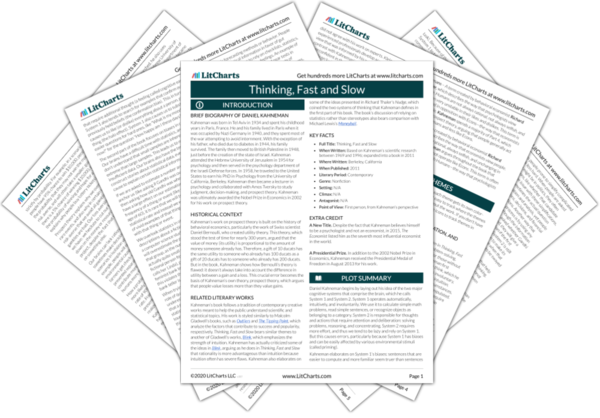LitCharts assigns a color and icon to each theme in Thinking, Fast and Slow, which you can use to track the themes throughout the work.
Intuition, Deliberation, and Laziness
Human Fallibility and Overconfidence
Stories and Subjectivity vs. Statistics and Objectivity
Choices, Losses, and Gains
